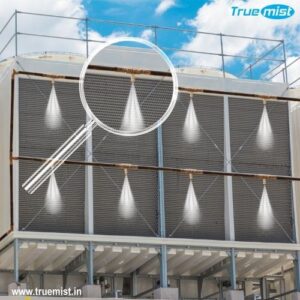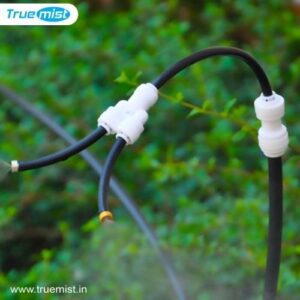Description
Adiabatic cooling systems for chillers work by using the process of adiabatic cooling to lower the temperature of the air that is drawn into the chiller's condenser. This is done by introducing a fine mist of water into the air, which evaporates and cools the surrounding air. As a result, the temperature of the air entering the chiller's condenser is reduced, which improves the chiller's efficiency.
In addition to improving efficiency, adiabatic cooling systems for chillers can also help to reduce the energy consumption of the chiller. By reducing the temperature of the air entering the chiller's condenser, the chiller does not need to work as hard to cool the water or liquid, which results in lower energy consumption.
As your systems run more efficiently, you can expect to experience the following benefits:
- Reduced energy consumption
- Lower greenhouse gas emissions
- Water savings
- Cost savings resulting from reduced energy and water usage
Adiabatic cooling systems are suitable for use in a variety of settings, including:
- Commercial and industrial air conditioning
- Refrigeration units
- HVAC units
During hot weather months, cooling systems are under constant pressure to circulate enough cool air to maintain comfortable indoor temperatures. As the outdoor temperature rises, the energy consumption of air conditioning units increases substantially. Additionally, the cooling capacity of air conditioning units decreases, putting additional strain on the system. Adiabatic cooling systems can help to alleviate some of this pressure, resulting in more efficient and cost-effective operation.
As the load on the air conditioning system increases, it can result in a number of negative consequences, including:
- Poor performance
- Untimely shutdowns
- Compromised product quality
- Reduced air conditioning performance
- Increased electricity consumption
- Severe stress on mechanical parts, which can shorten the lifespan of the unit
- Excessive loads on the condensing coil from extreme heat, which can eventually cause the unit to shut down.
By using an adiabatic cooling system, you can experience the following benefits:
- Reduction of the outside air temperature entering the unit by up to 12°C
- Energy consumption savings of up to 30%
- Up to a 30% increase in air conditioning efficiency
- Reduced system downtime
- Improved occupant comfort levels
- Substantial extension of the lifespan of air conditioning units
- Environmental benefits, such as lower kW consumption and a reduced carbon footprint.





